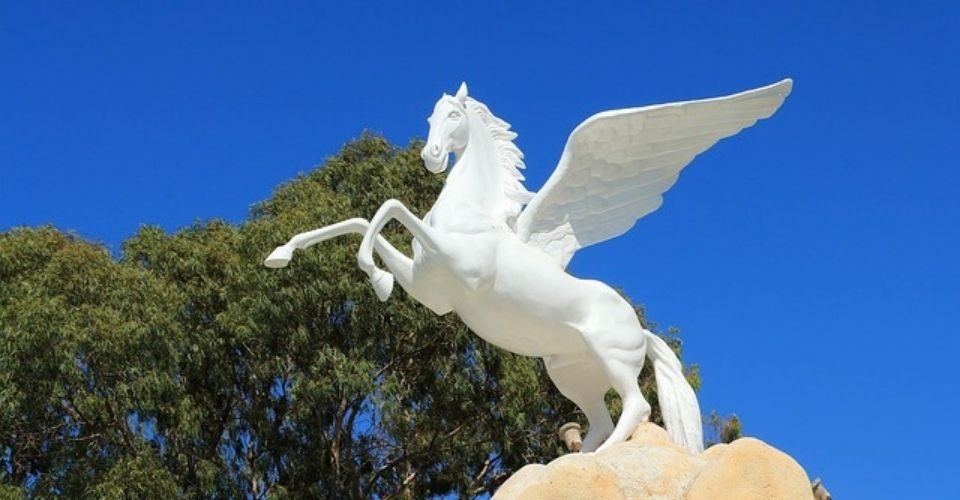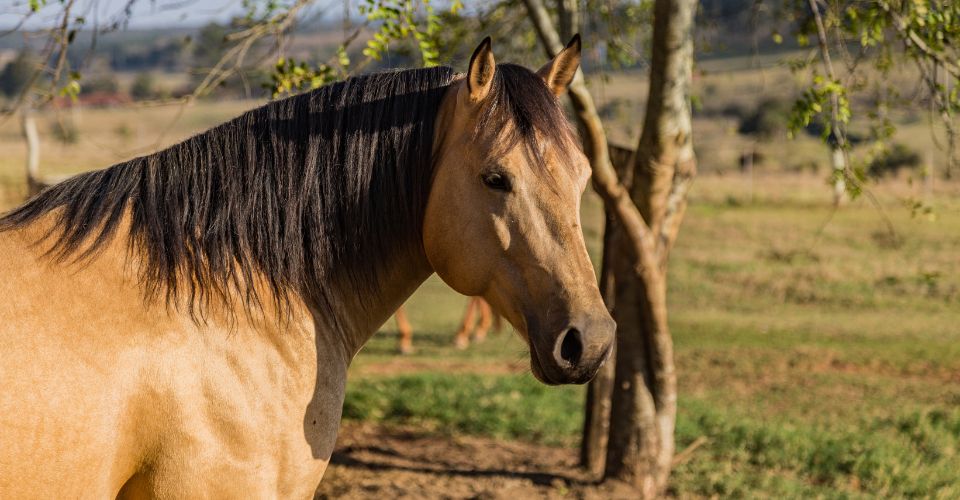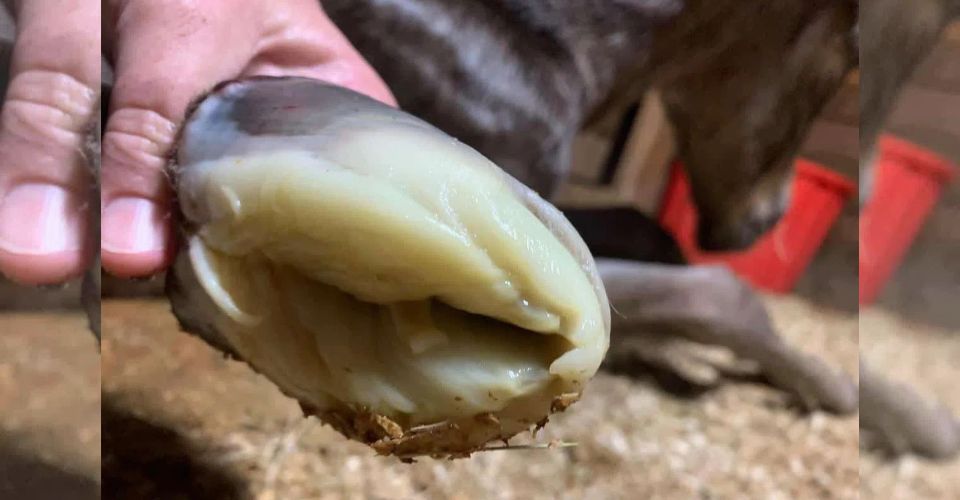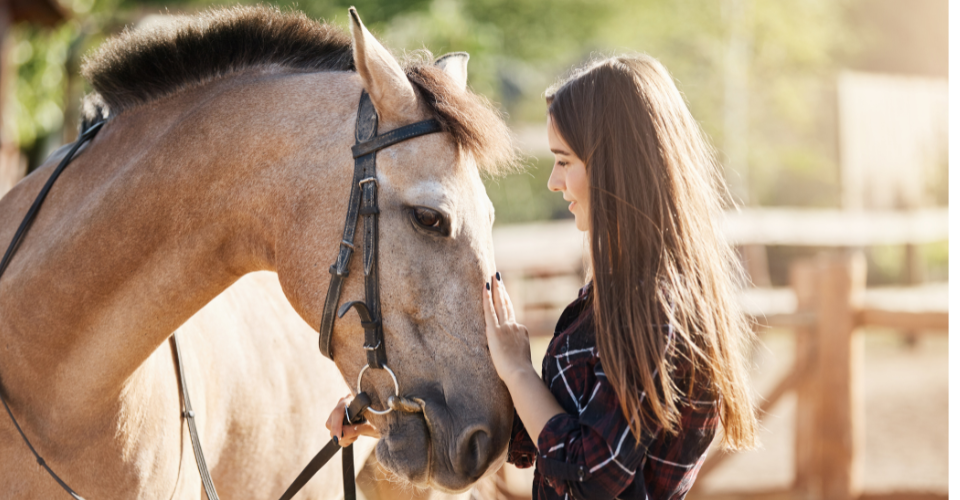It was almost 5000 years ago when humans domesticated horses. Since then, horses have been our best buddies in war, work, travel, and fun. Over these thousands of years’ partnership with equines, some have left lasting imprints on our minds.
What made them stand out?
It can be anything from their speed, strength, good looks, loyalty, Hollywood fame, or recognition as a war hero. The stories of some special horses became popular and stood the test of time, many of them now having a legendary status.
Whether ancient or modern, here are some famous recognized celebrities from the equine world whose stories you might want to know about.
1. Sergeant Reckless

Sergeant Reckless was a US military horse that achieved the rank of sergeant for her bravery and service in the army. This servile warhorse came in the Korean War from humble beginnings as a packhorse to become a decorated veteran by the end of her tenure.
She not only distributed supplies to soldiers on solo missions but also vacated wounded soldiers from battlegrounds. She was honored for her faithful services in the military. Sergeant Reckless was awarded two Purple Hearts and a Good Conduct Medal because she was wounded twice in the line of duty. She died in 1968. In 1997, LIFE magazine listed Reckless as one of America’s 100 all-time heroes.
2. Trigger
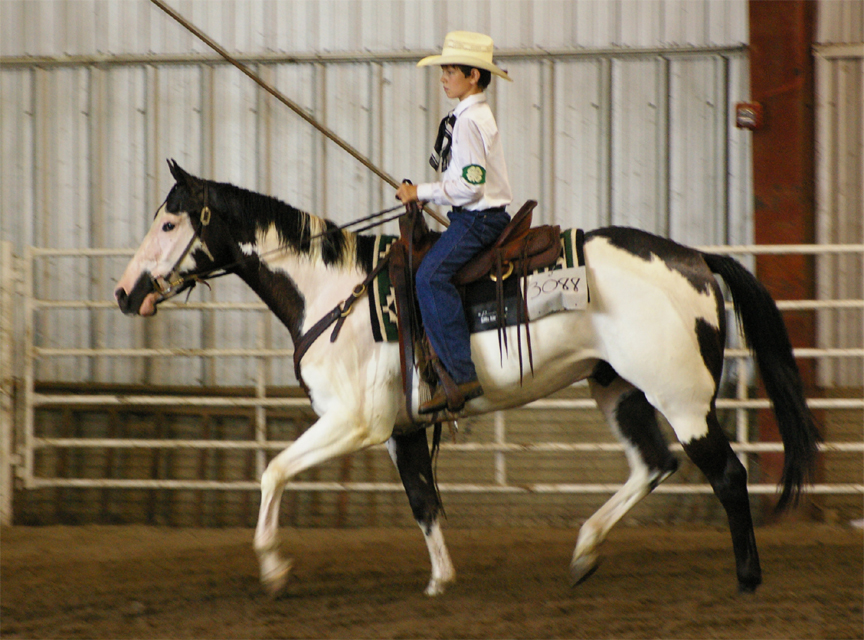
The Trigger was the famous Palomino horse of Roy Rogers. He accompanied Rogers in movies like “Don’t Fence Me In” and “The Golden Stallion.” He also performed several live performances before large audiences.
The Trigger was familiar with at least 150 trick cues and was famous for his skill of walking on his back legs. He was a fully house-trained horse, which turned out to be useful when he would visit sick children in the hospital.
The Trigger was so close and dear to Rogers that when the Palomino died in 1965, Rogers had the horse taxidermied in a rearing position. Trigger still stands firm in the Roy Rogers/Dale Evans Museum in Branson, Missouri.
3. Godolphin Arabian
This famous Arabian Stallion lived in the United Kingdom during the 18th century.
Godolphin Arabian is one of the few famous horses recognized as the base sires for the Thoroughbred horse breed. Almost every modern Thoroughbred racehorse traces its lineage back to the Godolphin Arabian.
Godolphin was recognized for being robust and powerful with a high crest. He was highly adored by the breeders of his time.
4. Comanche

Comanche was a mixed-breed horse, bought and ridden by Captain Miles Keogh of the 7th Cavalry.
Comanche became famous in the war times and was the lone survivor of the Battle of the Little Bighorn in 1876. A sad ending! He was, however, compensated for his status as a war hero with a lavish retirement.
Comanche lived for fifteen years after the war. He was stuffed when he died and preserved in a glass case at the University of Kansas.
5. Marengo

Marengo was the horse of Napoleon Bonaparte. He fought bravely in many battles, such as the Austerlitz, Wagram, and finally, the Battle of Waterloo in 1815. He was wounded eight times in his career.
He was often used in 80-mile gallops, which he could complete in five hours. Marengo was famous for his long-distance gallops.
Marengo was captured at the Battle of Waterloo by the English and brought back to the UK for the rest of his life. Marengo’s skeleton is still on display at the National Army Museum in London.
6. Bucephalus

Bucephalus was the well-known horse of Alexander the Great and one of the most famous horses of antiquity. Bucephalus was a black stallion, matchless in battle and unrivaled in beauty.
Bucephalus was named after a branding mark depicting an ox’s head on his haunch. He was recognized for his bravery and stamina, riding into many battles fearlessly and readily.
He was tamed by young Alexander when he noticed that Bucephalus was freaked out by the sight of his own shadow. He grasped his reins and turned his head towards the sun. When he saw that Bucephalus was over his fears, he urged him forward, controlling him with a touch of his heels and a commanding voice.
Since that day, Bucephalus has accompanied him in many battles. Bucephalus is believed to have died from injuries incurred in a battle.
7. Seabiscuit

Seabiscuit was an American champion Thoroughbred racehorse of the 20th century. He was the top money-winning racehorse up to the 1940s.
He took on the 1937 Triple-Crown winner (War Admiral) by 4 lengths in a 2-horse special at Pimlico and was voted as the American Horse of the Year in 1938, proving to be the best underdog that the racing world has ever seen.
Despite his small size (15.2 hands high) and an unpromising start to his racing career, winning only a quarter of his first 40 races, he still became an unlikely champion to many Americans. He proved that size does not matter, but efforts and struggle do.
Seabiscuit has been the subject of many books and films, including Seabiscuit: The Lost Documentary (1939), The Story of Seabiscuit (1949), the book “Seabiscuit: An American Legend” (1999), and a film adaptation of this book that was nominated for the Academy Award for Best Picture.
8. Frankel
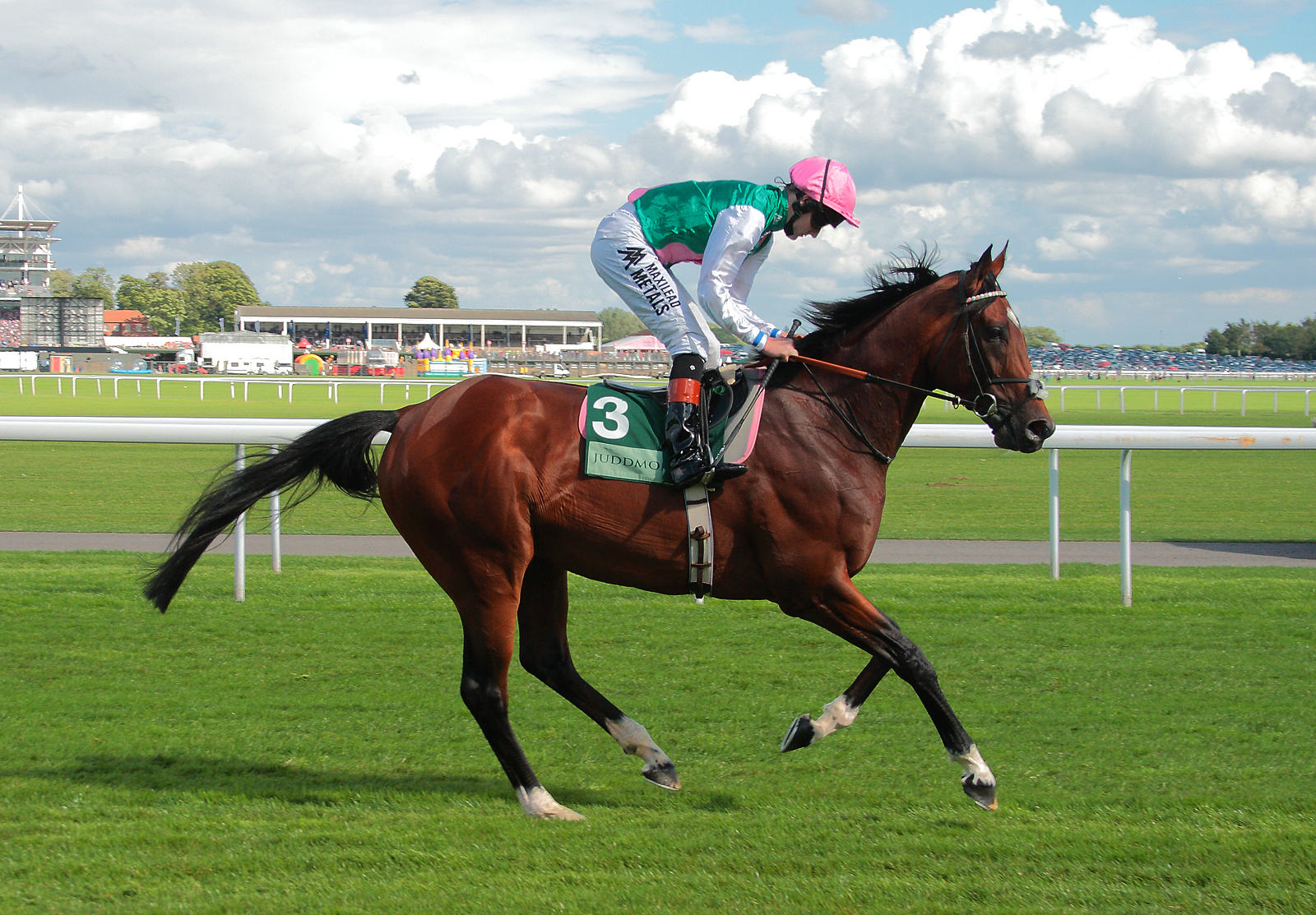
Frankel is an iconic British racehorse with a height of 16.1 hh. He was an undefeated European champion and was the top-rated racehorse in the world in 2011 and arguably of all time.
Frankel has been entitled “The Unbeatable Wonder Horse” due to his perfect record on the racetrack. He was also dubbed the equine version of Usain Bolt. Some even compared him to the great Secretariat.
To be victorious in 14 starts, 10 of them in group 1 races, that too by great distances is an amazing record! His name is evident to live on in the bloodlines of champions to come.
9. Man O’War
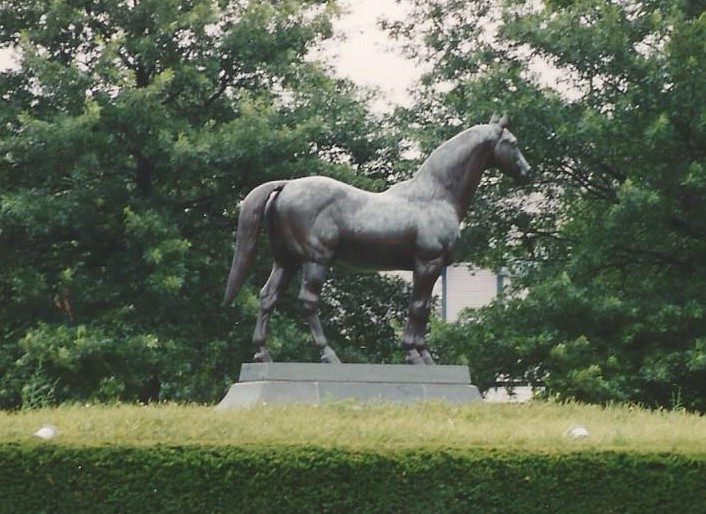
Man O’War was an American Thoroughbred racehorse that is considered as one of the greatest racehorses of all time. He was also known as “Big Red”.
Man O’War was voted as the best racehorse of the 20th century by high-profile periodicals like The Blood-Horse, Sports Illustrated, ESPN, and the Associated Press. The New York Times paid tribute to him with Babe Ruth as the excellent athlete of the year.
His bloodlines extend to legends like Secretariat, Seabiscuit, Hard Tack, War Admiral, Battleship, and many more.
Man O’War was only beaten once in a highly debated victory by a horse named Upset, his only loss at Saratoga Race Course, later named as Graveyard of Champions. Some debate that it was not a valid race due to a jumbled start.
Man O’War was brought into the National Museum of Racing and Hall of Fame in 1957. The museum opened a special exhibit in his honor on March 29, 2017, named “Man O’War at 100”.
10. Secretariat
Secretariat was an iconic American horse, super famous and as versatile as he was fast. Well-known among people due to his unbeatable racing career, several awards, and statues in Hollywood.
An extraordinary and good looking horse, Secretariat was a cover star that lived the American dream. The first horse to win the Triple Crown in 25, and setting a record-breaking victory in the 1973 Belmont Stakes, winning by 31 lengths. This victory is considered one of the greatest in history.
Secretariat set records that still stand today. He was named Horse of the Year twice, also the first two-year-old to be voted unanimously the Eclipse Award as the Horse of the Year.
Secretariat was also the first horse to have a Hollywood agent manage his appearances. He was named one of ESPN’s 100 Greatest Athletes of the 20th Century. He was a media superstar and was featured on the covers of Time, Newsweek, Sports Illustrated, and on a commemorative stamp. He even has his own film “Secretariat.”
11. Arkle

Arkle was an Irish Thoroughbred racehorse. He was a true champion, winning three consecutive Gold Cups, the Irish National, Whitbread, and Hennessy Gold Cups, and gamboled home in the Gallagher Gold Cup to bang the course record by 17 seconds, lugging 16 lb. more than his rival.
In the Irish Grand National, the racing authorities took an exceptional step of formulating two weight systems, one to be used when Arkle was running and the other when he was not. Arkle still won the 1964 race by only one length, even by carrying two and a half stones more than his rivals.
Arkle was known as “Himself” and would receive postal accolades addressed to ‘Arkle, Ireland’. He was a charming Irish national hero and remains the brightest star in steeplechasing’s firmament.
12. Black Beauty

Black Beauty is a fictional horse in a novel of the same name, written by Anna Sewell in 1877, in which she wrote about kindness, understanding, and sympathy in the treatment of horses. Black beauty is considered among the top children’s books of all time, although it was not originally written as a sweet tale for children.
Black Beauty has been a bestseller and appreciated by generations that have encouraged television series and feature films as well. The novel has an idyllic start and a relatively happy ending. It achieved real success by shining light on inhumane practices concerning horses. Precisely, the book added to the use of a bearing-rein on hard-working carriage horses falling out of fashion.
13. Burmese
Burmese was a black RCMP (Royal Canadian Mounted Police) police service horse (PSH). It was given to Queen Elizabeth II by RCMP. Her Majesty rode the mare for 18 consecutive years at the Trooping the Color Parade from 1969 to 1986.
The Queen was mounted on Burmese when six blank shots were fired during the 1981 birthday parade, although the horse panicked, the Queen showed her riding skills and controlled Burmese.
After 21 years of service, Burmese retired, and her last public appearance as at Trooping the Color in 1986. She was not replaced, and the Queen decided to ride in a phaeton.
Burmese died in 1990 and was put out to pasture at Windsor Castle’s Park.
14. Cornishman V
Cornishman V was initially an unschooled family hunter horse who later carried Mary Gordon-Watson for her Pony Club A-test, competed in point to points, and was the equestrian star of International Velvet and Dick Francis’s Dead Cert.
He reached the advanced level in just two events and took Olympic Team Gold Medals in Mexico in 1968 with Richard Meade and Munich 1972 with Mary Gordon-Watson. He also won the World Championships in Punchestown by 60 marks for a team and individual gold.
Cornishman V retired in 1973, but Mary Gordon-Watson continued to hunt and chase him. Cornishman was a clever and genuine horse, couldn’t be taken for granted.
15. Desert Orchid
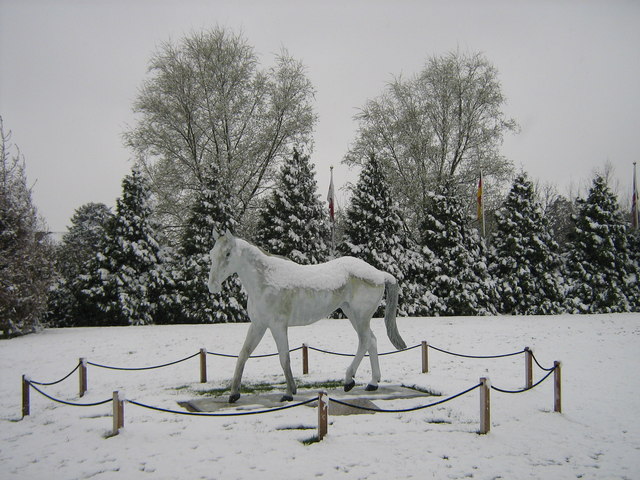
Desert Orchid, nicknamed Dessie, was an English home-bred grey horse. He was bred by James Burridge in Leicestershire in 1979. The grey attained a respected status within National Hunt racing. He was a true celebrity and won the hearts of the nation. He was a front-runner and so easy to pick out even for a part-time punter.
He was admired for his personality and winnings, four of his 34 wins were in the King George VI Chase. His 1989 Cheltenham Gold Cup win stays an epic race and a tribute to the horse’s strong spirit, earning him three cheers in the winner’s enclosure.
Dessie maintained a popular fan club throughout his retirement. He made guest appearances and raised money for charity.
Desert Orchid died peacefully in 2006 at the age of 27, and his ashes are buried by his statue at Kempton.
16. Eclipse

Eclipse was an 18th century British Thoroughbred racehorse known as the godfather of modern racing. Eclipse was unbeaten in his 18 starts that included 11 king’s plates.
He was sound, strong, and fast. His tough temperament might have led him to be gelded, but instead, he was turned over to a rough rider, who worked him hard all day.
Eclipse is thought to have covered 25 ft. in a single stride and was far from being beatable, no one could be found to bet against him even at the end of his career.
After retirement from the racing career, he became a successful sire and appears in the pedigree of most modern Thoroughbreds.
17. Joey
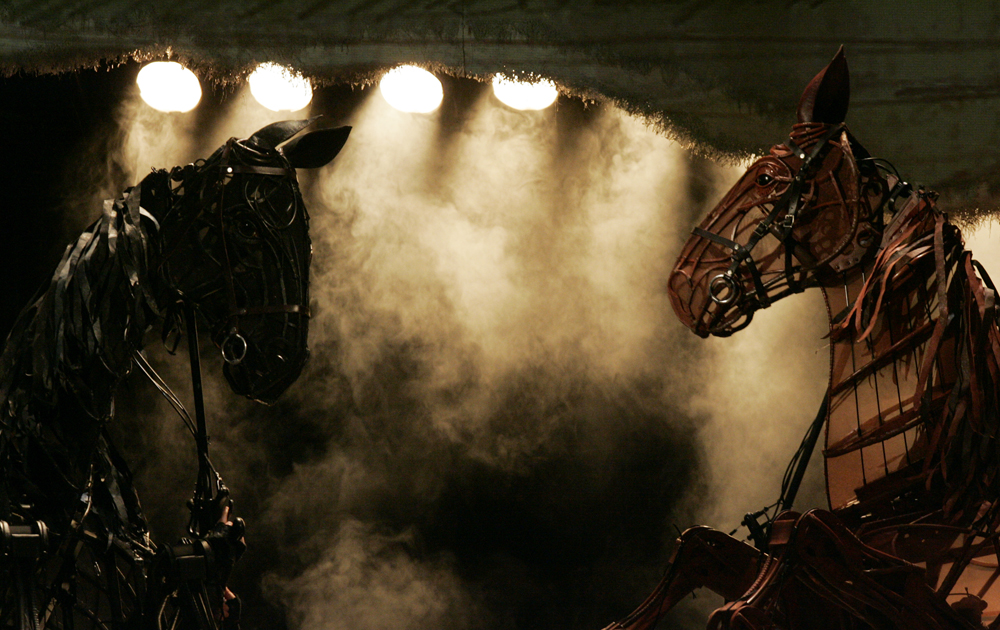
Joey the war horse is a character in the novel ‘War Horse’ by Micheal Morpurgo. It was initially published by Kaye and Ward in Great Britain in 1982. The story of the novel narrates the experiences of Joey, a horse bought by the Army for service in World War I in France, and the efforts of a 15-year-old boy Albert, his ex-owner, to take him back home safely.
Joey survived enemy fire, cavalry charges, barbed-wire, and draught work to be reunited with his owner, Albert. Unlike most war horses that has no happy ending, this one did and it reminds people of the millions of horses that went to war.
Joey has since been given full Hollywood treatment, and it formed the basis of both an award-winning play and an acclaimed film adaptation by Steven Spielberg.
18. Kipper
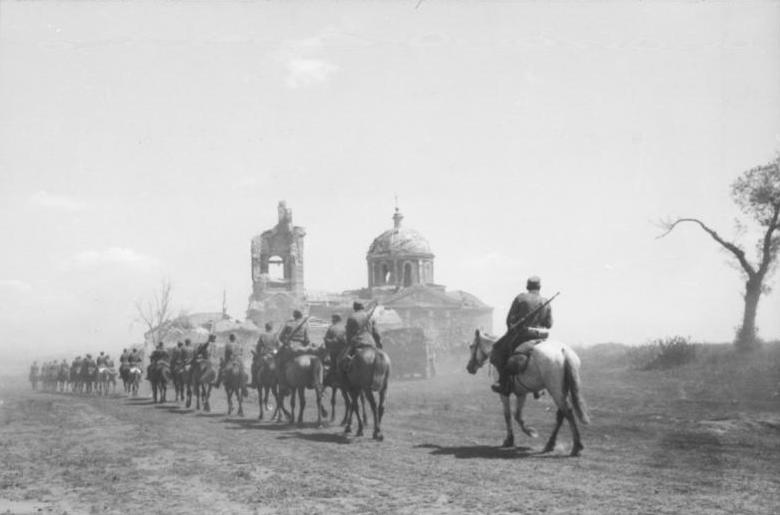
Kipper was a pony cartoon character drawn by Norman Thelwell. It first appeared in the 1960s strip cartoon in the Sunday Express. Kipper strikes a chord because horse cartoons are difficult to draw, yet kipper gives a realistic look. Kipper is the first pony every ‘Penelope’ had or wanted.
Norman Thelwell was not horsey himself, but he possessed a brilliant eye, and his cartoons were delightfully instructive.
19. The Maltese Cat
The Maltese Cat is an excellent story about horses and polo, only Kipling could create the perfect polo pony, and the most brilliant polo game.
The Maltese Cat was a polo pony. He might have started with pulling a vegetable cart in Malta, but it was a tactician and poet of polo and was welcomed in the officers’ mess for polo.
20. Milton
Marius Silver Jubilee, also known as Milton, was a victorious showjumping horse. Milton was a grey gelding, 16.2 hands tall and high at the withers. Initially ridden by Caroline Bradley, but after her death, he came to fame under John Whitaker. Their collaboration was legendary, jumping seven consecutive double clears in the Nations Cup, a silver and a bronze medal at the World Championships, three gold medals at the European Championships, and two FEI world cup finals.
Milton used to float over fences, hardly encountering an error and upholding a loyal following throughout a long career.
After retirement in 1994, Milton was the first horse outside racing to have won more than £1m (excluding the value of cars won). He earned his place in the pantheon of great horses.
21. Pegasus

Pegasus is a pure white Greek mythical winged divine horse. He is one of the most renowned creatures in Greek mythology.
His revolting beginning is outshined by his heroic deeds, comprising of taking Bellerophon to triumph over the Chimera, carrying thunderbolts for Zeus, and his large constellation, evident in both hemispheres.
Pegasus is a demigod and the most frequently depicted horse of all time.
22. Red Rum

Red Rum was a champion Thoroughbred steeplechaser. He was prominent for his jumping ability and never fell in 100 races. He accomplished a matchless historic treble, winning the Grand National 1973, 1974, and 1977, whereas came second in 1975 and 1976, although Grand National is a race that is labeled as an ultimate test of a horse’s courage. His television appearances include BBC Sports Personality of the Year.
Red Rum was prepared for a sixth attempt at the Grand National, but he underwent a hairline fracture in the lead up to the 1978 race. He was retired the day before the 1978 Grand National, following a canter at Aintree Racecourse. An active retirement counted switching on the lights at Blackpool, and there was an outcry at the prospect of his sale to a Japanese/American restaurateur, one of Rum’s fans.
The news of Red Rum’s retirement was the lead story of that night’s 9 o clock News on BBC and also the front page of the following morning newspapers.
Red Rum is buried not so far from the Southport sands where he was trained.
23. Sefton
Sefton was a British army horse who served for 17 years before his retirement and remains a figure of stoic courage in the public mind.
Sefton survived dreadful wounds after the Hyde Park bombing in 1982, and surprisingly returned to service too. That year, he was awarded Horse of the Year.
He received a lot of cards and mints while he was in the hospital. Donations surpassing £620,000 were received to form a new surgical wing at Royal Veterinary College, which was named the Sefton Surgical Wing.
His spirit and valor caught the imagination of the British people, a sign of struggle against terrorism at a time when the IRA’s bombings were at peak.
24. Valegro
Valegro is a gelding ridden by the British equestrian Charlotte Dujardin in the sport of dressage, he brought dressage to the masses and swept all before him. He stands 16.2 hands. His stable name is Blueberry. He is a double World Champion in Dressage, having won Grand Prix Special and Grand Prix Freestyle at the World. He has been breaking world records with almost every outing.
This one-in-a-million horse has enthralled the public as well as his rider. His farewell performance at Olympia was mind-blowing and got him a standing ovation. He is still an inspiration and meets his fans with appearances and masterclasses.
25. Whistlejacket

Whistlejacket is an oil on canvas painting from 1762. The painting of the Arabian Thoroughbred was by the British artist George Stubbs showing the Marquess of Rockingham’s stallion racehorse. It is a life-size portrait on a plain background. The canvas is huge, and deficits any other concept apart from some discreet shadows, and the artist has given detailed attention to the details of the horse’s appearance.
A superb racehorse with creditable wins under his girth, as well as a strong four-miler at York, Whistlejacket stays famous not for his speed but for his image. Stubbs’ life-size portrait of Whistlejacket is promptly identifiable.
The painting is perhaps the most famous work by the finest equine artist of all time. Stubbs raised up animal painting and portraiture to a genre of art. The painting has been defined in The Independence as “a paradigm of the flawless beauty of an Arabian Thoroughbred.”
This was a list of the top 25 famous horses. Want to know more about horses and horse care? Head to our Horse Section where discuss it all!

